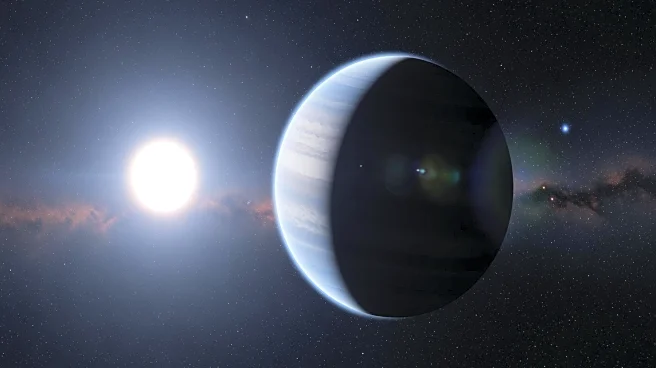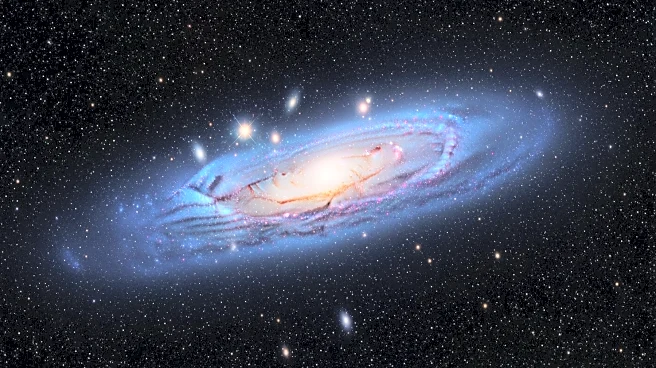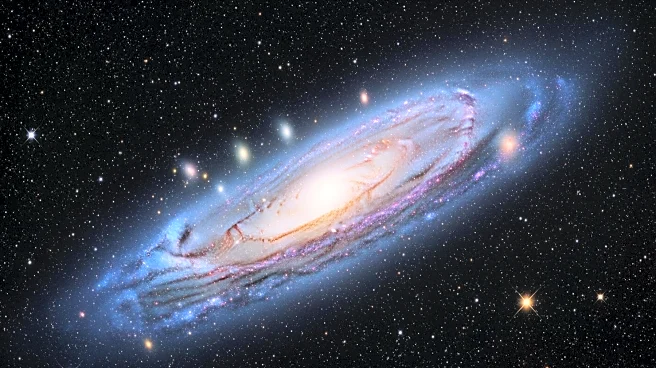What's Happening?
A team of astronomers led by Luca Naponiello from the Observatory of Turin has confirmed the existence of a second exoplanet in the TOI-1422 system, located approximately 500 light years from Earth. The
exoplanet, designated TOI-1422 c, is nearly three times larger and 14 times more massive than Earth. This discovery was made using data from NASA's Transiting Exoplanet Survey Satellite (TESS) and radial velocity measurements. TOI-1422 c orbits its host star every 34.5 days at a distance of 0.2 AU, with a radius of 2.61 Earth radii and a density of 4.3 g/cm3. The planet's equilibrium temperature is estimated at 628 K. The TOI-1422 system also includes a warm Neptune-sized exoplanet, TOI-1422 b, which orbits the star every 13 days. The study highlights an unusual mass-density pattern where the outer planet, TOI-1422 c, is more massive yet smaller than the inner planet, TOI-1422 b.
Why It's Important?
The confirmation of TOI-1422 c provides valuable insights into planetary formation and system architecture. The unique mass-density inversion observed in the TOI-1422 system challenges existing models that typically predict decreasing mass and radius with increasing orbital period. This discovery could lead to a reevaluation of theories regarding planet formation and evolution, particularly in multi-planet systems. Understanding such anomalies is crucial for astronomers as they refine models of planetary dynamics and seek to comprehend the diversity of planetary systems in the universe. The findings may also influence future observational strategies and the search for potentially habitable exoplanets.
What's Next?
Further investigations are needed to explore the possibility of a third planet in the TOI-1422 system. The study noted significant transit timing variations (TTVs) for TOI-1422 b, which are not caused by TOI-1422 c, suggesting the presence of an unseen planetary companion. Additional photometric observations and extreme-precision radial velocity measurements are required to confirm this hypothesis. Continued research in this system could provide deeper insights into the dynamics of multi-planet systems and the factors influencing their formation.
Beyond the Headlines
The discovery of TOI-1422 c and its unique characteristics may have broader implications for the study of exoplanets. It highlights the complexity and diversity of planetary systems, encouraging astronomers to consider alternative models of planet formation. The findings could also impact the search for life beyond Earth, as understanding the conditions under which planets form and evolve is essential for identifying potentially habitable environments. This research underscores the importance of advanced observational technologies like TESS in expanding our knowledge of the universe.











